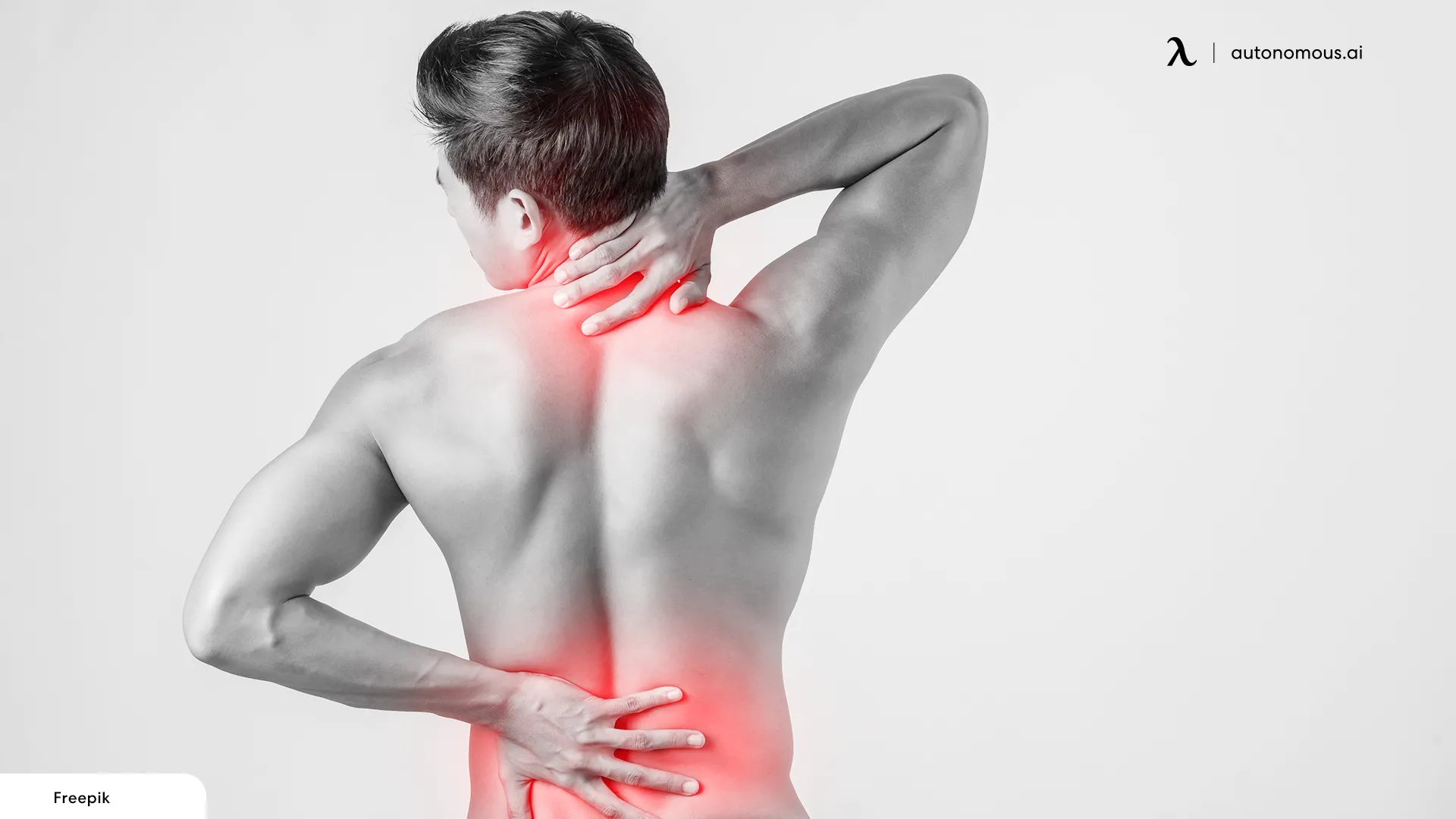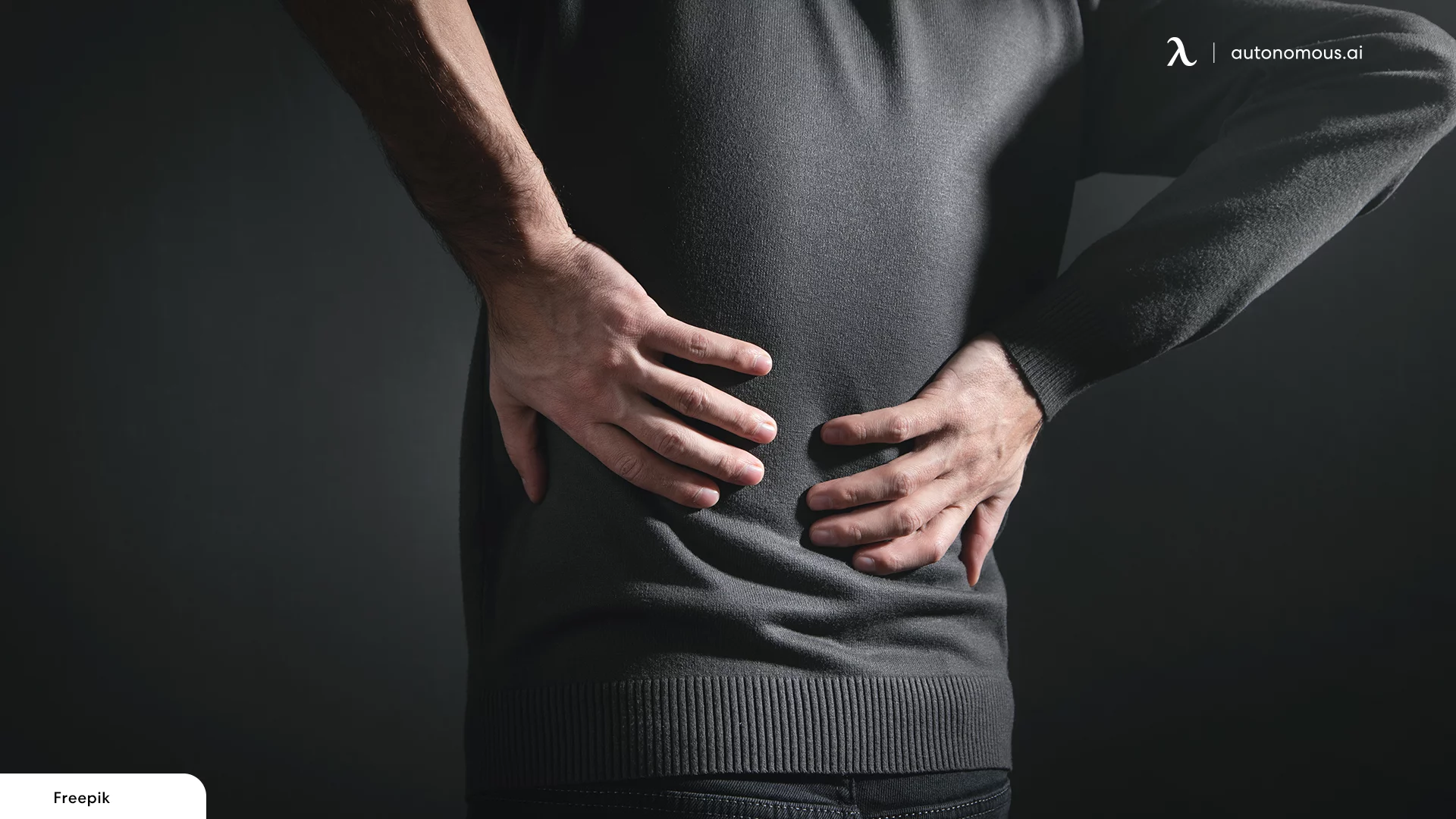
Things to Know About Bruised Back & Bruised Spine
Table of Contents
Having a bruised spine can be debilitating, as anyone who has experienced it knows. The sharp and constant pain often makes it difficult to complete even the most basic tasks. Finding a treatment for this bruised back condition that fits all patients is difficult. It is possible, however, to find relief from your bruised back muscle pain by working with your doctor and exploring different treatment options.
The bruised sensation in the spine is generally caused by herniated or bulging discs. A disc can rupture and press on the bruised spine or nerves when the softer inner portion breaks through the outer layer. Many other factors can cause spinal bruisings, such as age and back injuries.
What are the main reasons for spinal cord injuries being permanent? There seems to be a great deal of difficulty in regenerating spinal nerves. A spinal cord injury causes a lot of nasty things to happen to the body, many of which happen in the first few hours, causing scarring and inhibiting nerve regeneration. It is difficult to prevent or undo many of these mechanisms until the spine feels bruised fully understood or to get nerve regrowth to happen until they are.
How Does Bruising Your Spine Affect You?
It is common for bulging discs or herniated discs to produce a bruised sensation near the spine. There can be great discomfort and pain associated with a bulging or herniated disc. Spinal discs protect the vertebrae by cushioning them from impact and acting as shock absorbers. Over time, the discs may become damaged and protrude out of position.
Consequently, pain, numbness, and weakness may occur due to pressure on the spinal cord and nerves. In some cases, discs rupture, allowing the gel-like contents to escape. A doctor should diagnose back pain if you experience it. It is usually possible to find relief from the pain, return to a normal range of motion after treatment for these conditions, and then work on finding the best way to sit with lower back pain.

Differences Between A Bruised Spine And Other Bruises
The cause of bruises and contusions is damaged blood vessels, which bleed at the site of injury. The discoloration and inflammation you experience may be caused by blood clots that stop the bleeding. There is a possibility that a bruise on the spine could affect the function of the spinal cord, unlike bruises at other sites on the body.
Nerve signals move from the brain to the body via the spinal cord. The result is that a bruised spine may impair the nerves transmitting impulses between the body and the brain. Spinal cord injuries are common in the neck or cervical area of the spine. An injury to the neck can result in bruising of the spinal cord, blood flow loss, or severing of the cord itself.
Pain in the Spine: What Does It Feel Like?
You may feel dull aches or sharp pains if you have a sore spine. You may experience constant pain from the bruised back of the neck, or you may experience it intermittently. Sneezing, coughing, or movement may aggravate it. A sore spine can result from an injury or excessive use. Besides arthritis, degenerative disc disease, and spinal stenosis, it can also be caused by spinal stenosis.
Seeing a doctor for an accurate diagnosis is imperative if you suffer from spinal pain. In addition to rest, ice/heat therapy, exercises, correcting posture at a standing desk, and medications, there are a variety of treatment and spine support chair options available depending on the cause of the pain from a bruised back muscle. It may be necessary to undergo surgery in some cases. Such injuries can have serious consequences, so medical attention should be sought. An injury to the spinal bone can result in the following symptoms:
- Pain that is regionalized
- Local tenderness
- Discoloration
- Swelling
- Stiffness in the back
- Whenever you move or apply pressure, the pain worsens.

When Bruises Appear Without Injury, What Causes Them?
1. Intense exercise
You may experience more than sore muscles after intense exercise on your home gym equipment. You might notice the development of smaller bruises if you overdo it at the gym, especially on those frequently used muscles. Injuring the deeper muscle tissues under the skin is the result of straining a muscle. There is a possibility that blood vessels could burst, leaking blood into the surrounding tissue areas. Bruises result when blood pools under the skin for some reason that is greater than normal.

2. Medication
Bruising is more likely to occur when you take certain medications. A number of OTC pain medicines, including ibuprofen (Advil), naproxen (Aleve), and aspirin, upset your blood's clotting ability. Your blood does take a lot of time to clot fully; eventually, more of it leaks out from the blood vessels and accumulates under the skin. A doctor should be consulted if you think that your bruising may be caused by prescription or OTC medications.
3. Nutrient deficiency
Your blood is filled with vitamins that carry out many important best sitting positions for lower back pain functions. They contribute to red blood cell formation, mineral balance, and cholesterol control, among their many functions. The immune system is supported by Vitamin C, a nutrient that helps to heal wounds faster. You may experience "random" bruises due to not getting enough of this and other essential nutrients in your diet.
4. Inadequate Chair Support
Using a chair that doesn't provide proper support can exacerbate back problems. It's essential to choose an ergonomic chair that supports the natural curve of your spine. If you prefer sitting cross-legged, consider a cross legged office chair with arms or a cross legged office chair with wheels for better comfort and support.

When To See A Doctor?
Spinal injuries and consultation on the right spine alignment exercises should be evaluated by a medical professional immediately after sustaining significant head or neck trauma. Until proven otherwise, it is safe to assume that trauma victims have spinal injuries for the following reasons:
- Serious spinal injuries aren't always obvious right away. In the absence of knowledge, a more serious injury may result.
- There can be immediate or gradual numbness or paralysis.
- It can be critical to determine the extent and severity of complications and the possible recovery extent between injury and treatment.
Prevention and Management
1. Ergonomic Seating: Investing in an ergonomic chair is crucial for preventing back injuries. For dental hygienists, for example, a best saddle chair for dental hygienist can provide the necessary support and encourage a healthy sitting posture.
2. Adjust Your Workstation: Ensure your desk and chair are set up correctly. Your feet should be flat on the floor, knees at a 90-degree angle, and your computer screen at eye level. If your chair swivels too much, learn how to stop a swivel chair from swiveling to maintain stability and focus.
3. Take Breaks: Incorporate short breaks into your workday to stand, stretch, and walk around. This helps reduce muscle strain and improves circulation.
4. Use Heating Pads: Heat therapy can be effective in relieving back pain and muscle stiffness. Consider using the best heated office chair to provide continuous warmth and comfort during work hours.
Conclusion
Maintaining a healthy back is essential for office workers who spend long hours at their desks. Understanding the causes, symptoms, and preventive measures for a bruised back and spine can help you create a safer and more comfortable work environment. By choosing the right ergonomic chair, adjusting your workstation, taking regular breaks, and incorporating heat therapy, you can alleviate discomfort and enhance your overall well-being.
By taking proactive steps and making informed choices, you can protect your back and spine, ensuring a productive and pain-free work experience.
Stay connected with us!
Subscribe to our weekly updates to stay in the loop about our latest innovations and community news!
Interested in a Link Placement?
Spread the word
.svg)
.svg)



/https://storage.googleapis.com/s3-autonomous-upgrade-3/production/ecm/230914/bulk-order-sep-2023-720x1200-CTA-min.jpg)

/https://storage.googleapis.com/s3-autonomous-upgrade-3/production/ecm/230905/Untitleddesign.png)